The proximity of the built environment to nature is one of the things that makes Hong Kong unique and enchanting. Located in Lantau Island, Tai O is a fishing village with ancient roots that is 45 minutes’ drive from Hong Kong International Airport. Today, Tai O is a popular tourist destination that draws those who want a taste of an urban fishing village. Unlike many commercialised tourist attractions, Tai O retains the genuine fabric of everyday life; there you can find retired fishermen living in traditional stilt houses, and small local factories making shrimp sauce – a local delicacy for Chinese living in Hong Kong and abroad. We spent a weekend there talking to fishing families and a shrimp sauce maker who have passed down their traditions through the generations, and witnessed the changes in Tai O over the years.
Childhood on a fishing boat
Sited on the north western coast of Lantau Island and adjacent to the Pearl River Estuary, Tai O once hosted a flourishing population of yellow croakers (a species of croaker fish native to the western Pacific). Due to Tai O’s proximity to Macau and its shelter for fishing boats, it has attracted many fishing families to settle over the decades. Tai O’s seafood processing and salt making industries therefore also have a long history. However, since the 1970s, its population has been falling as young people moved to the city to work; meanwhile, its fishing industry has faded as the overall fishing yield of Hong Kong declined.
“Our boat was around 10 meters long and we used it mainly for catching fish. Later, when we got a motorised boat, we used it for catching shrimps.”

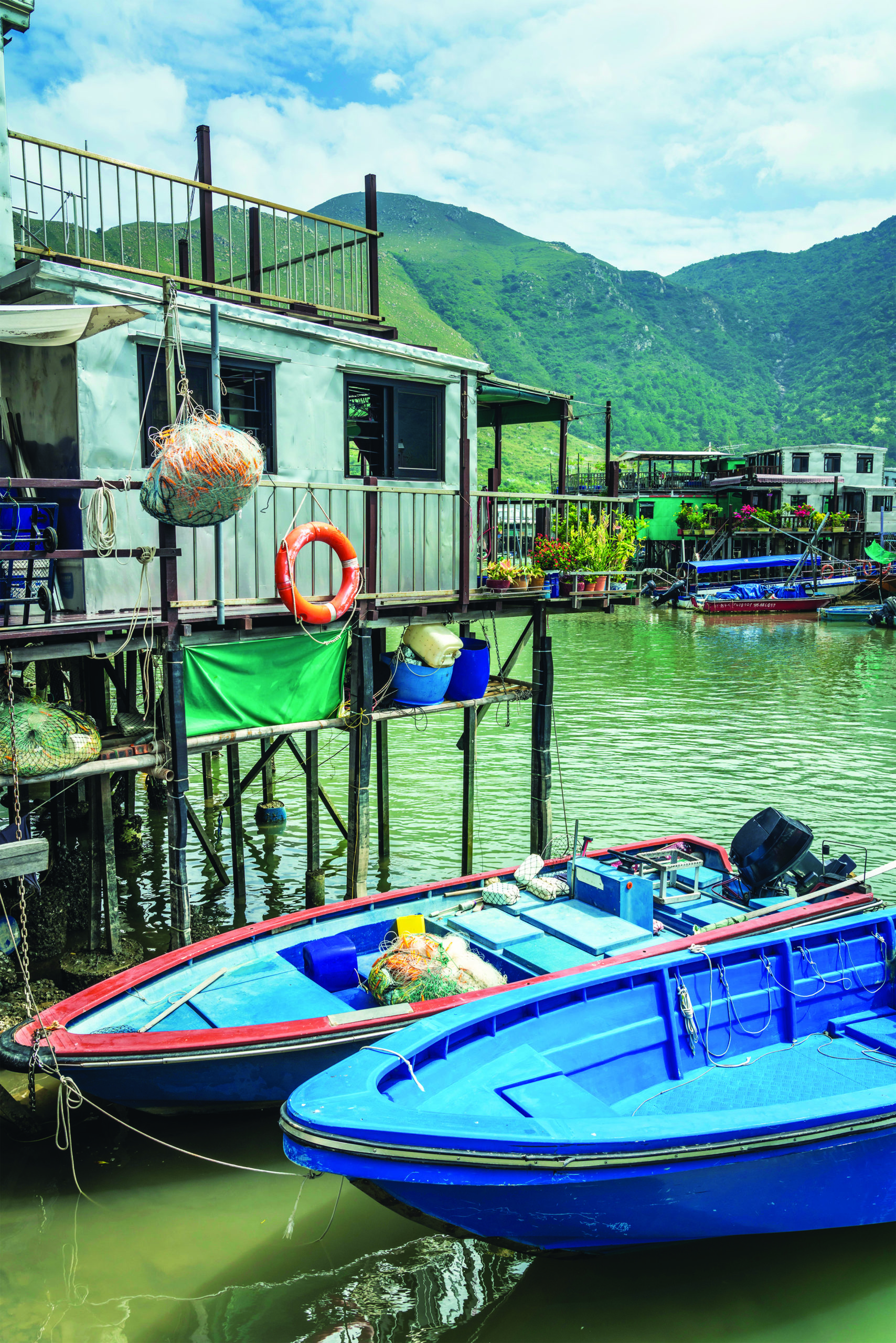
Wong Yung Kan, Vice-chairman of Tai O Rural Committee, is in his 70s. Born into a fishing family, he has spent most of his life living on a fishing boat, and only settled on dry land in the 1990s. He has a swarthy complexion from years of working outdoors in all weathers; and he recalls his childhood memories with emotion, and a smile. Wong says his favourite pastime as a child was playing with friends on the shoreline, where they enjoyed catching fresh shrimps hiding just beneath the sand. Clutching their catches with excitement, they would bring home these treasures and ask their mothers to prepare an extra dish for the evening.
Wong grew up fishing with his parents. In the early days, his family’s boat was very basic and had no engine: “Our boat was around 10 meters long and we used it mainly for catching fish. Later, when we got a motorised boat, we used it for catching shrimps. Usually, we went out fishing at sunset or late in the evening, and returned to Tai O the next morning.” At that time, many children from fishing families attended the Tai O Public School; because of their unusual schedules, the headmaster allowed them to arrive at school late, or leave early. “Life was hard when I was little; I didn’t have a chance to go to school, but I’ve heard of the great things the headmaster did, and everyone respected him.”
Catching with eyes and ears
Though without their school educations, fishermen like Wong became fishing professionals by gaining experience in observing and interpreting tidal changes and weather conditions. For example, on baking hot days when there are waves but no wind, Wong says they must keep their wits about them: “If there is a strange phenomenon like a sudden surge of ‘flying dragons’ (ray fish) jumping out of the water like dolphins, it means we should return to port and prepare for storms.”
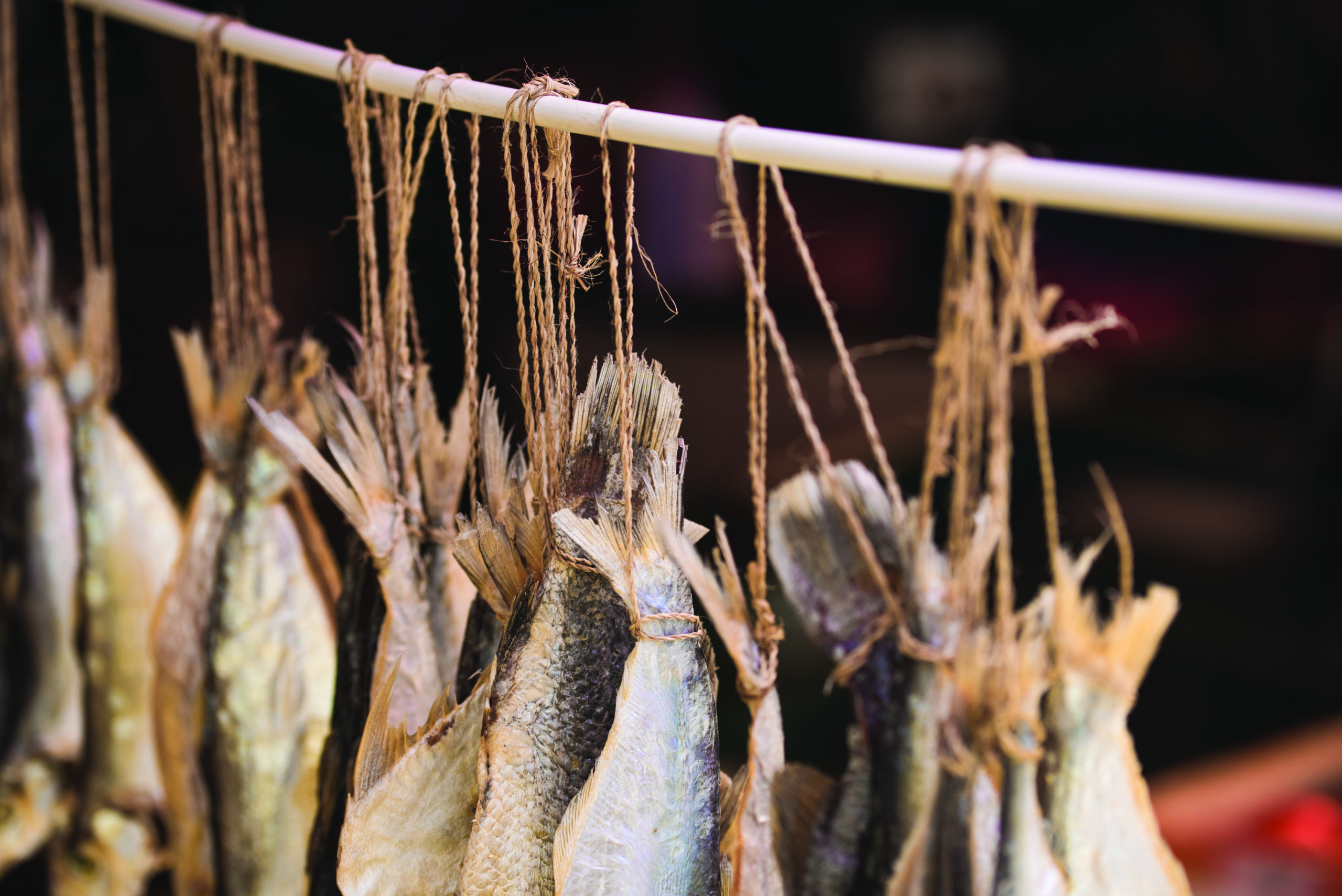
“If there is a strange phenomenon like a sudden surge of ‘flying dragons’ (ray fish) jumping out of the water like dolphins, it means we should return to port and prepare for storms.”
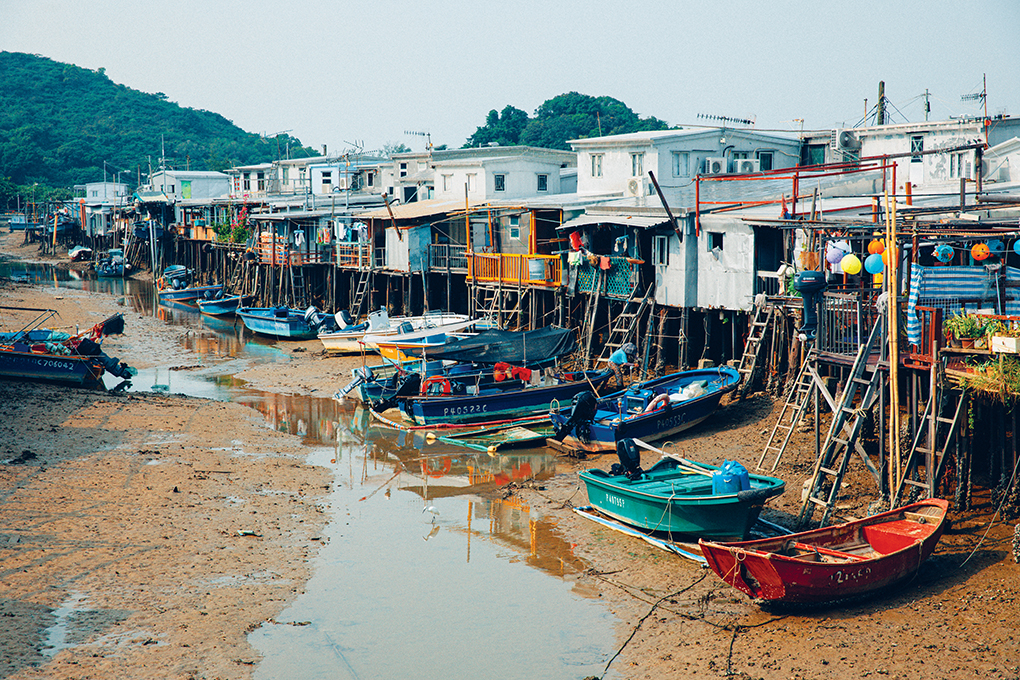
Weather forecasting is just one of the many secrets of fishing. “For example, to catch bottom-dwellers like shrimps, we have to fish by trawling - casting our nets across the seafloor. This is very different from the way in which we catch fish.” Fish yields in Tai O were plentiful in the 1980s (even after the 1950s peak), when fishermen could find threadfins, croakers and the wild yellow croakers so beloved of gourmets. “You have to catch yellow croakers by listening,” Wong says secretively. “Yellow croakers have sonic muscles for buoyancy control and hearing. When a shoal of croakers swims by, experienced fishermen can hear them by listening carefully; they can even tell the direction the fishes are going, and decide when to cast their nets.”
Leung Ming Chi, another older resident who grew up in Tai O says, “We fishermen develop special terms to describe fish activities. “Xie kou” (卸口) means a shoal of fish is swimming towards the net; “bao kou” (爆口) means the fishes are swimming around the net; and “si kou” (死口) means the fish are trapped.” With a combination of courage and wisdom, fishermen like Wong and Leung have brought some of the finest local seafood to families in Hong Kong.
Traditionally, fishermen built stilt houses along both sides of the waterway. The “head”(棚頭) is where they park their boats and live, and the “tail” (棚尾) is where they process seafood like salted fish and seaweed.
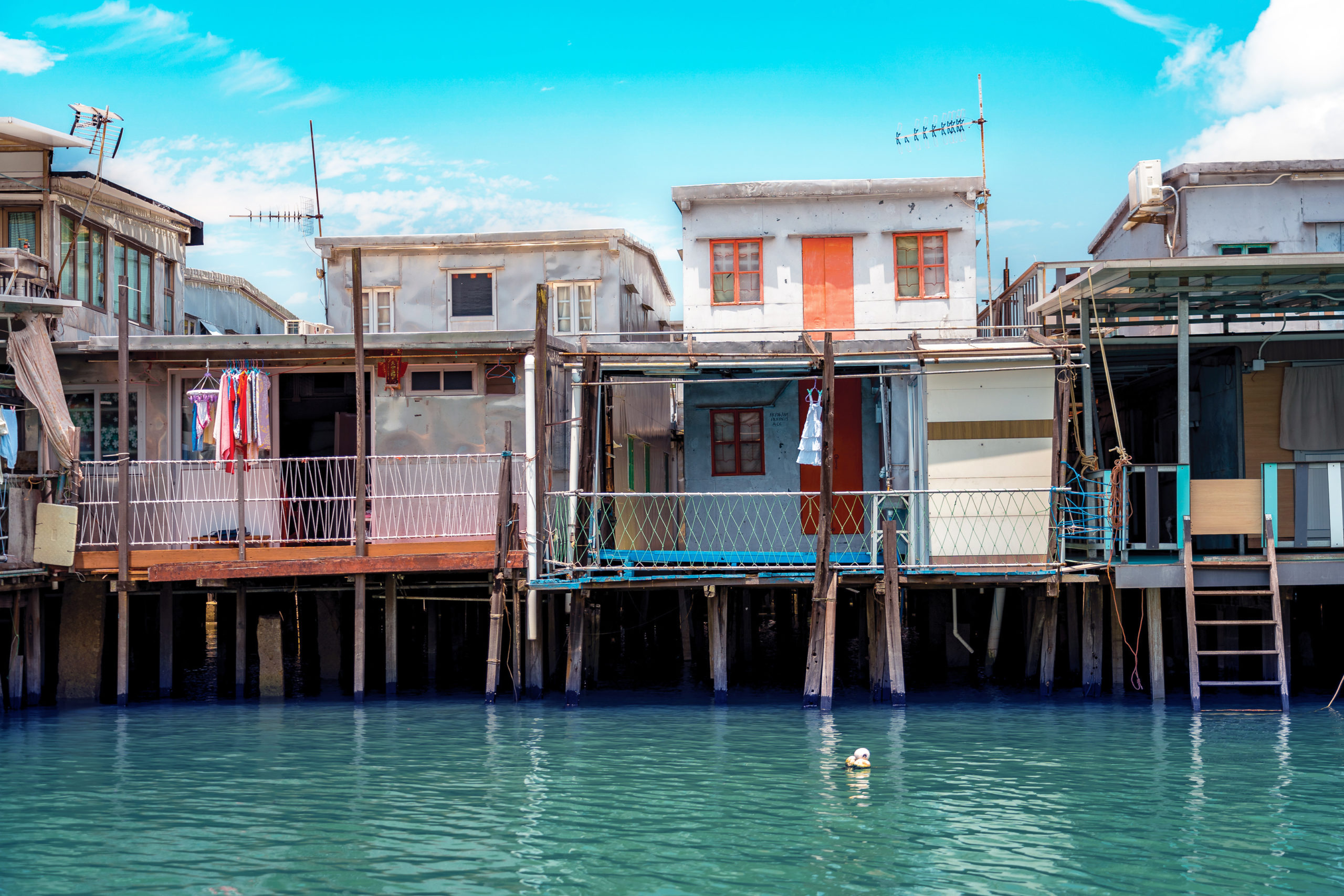
Stilt house: communities on land
Catching yellow croakers cannot be done with a single boat. “In the old days, we needed four boats working together to catch yellow croakers: two for listening to fish activities, and two for casting nets and preventing the fish from escaping. Very often we did this with neighbours living in stilt houses like ourselves,” Leung continues.
Today, the stilt houses where Leung still lives have become the distinguishing feature of Tai O, and the starting point for exploring the life of a fishing village and its community. Traditionally, fishermen built stilt houses along both sides of the waterway. The “head” (棚頭) is where they park their boats and live, and the “tail” (棚尾) is where they process seafood like salted fish and seaweed. Leung invited us to visit his home, as we left the rural committee office. “In the old days, people left retired boats on the shore. They then built simple dwellings by placing these abandoned boats on wooden or stone columns. When I was a teen, there were even families raising pigs under their dwellings. This was a very funny scene that we no longer see.” However, due to their primitive design, stilt houses were vulnerable in stormy seasons. “Every resident in Tai O remembers Typhoon Mary that hit us in 1960, when many fishing boats and the roofs of stilt houses were blown away. Flooding was also commonplace during typhoon seasons!”
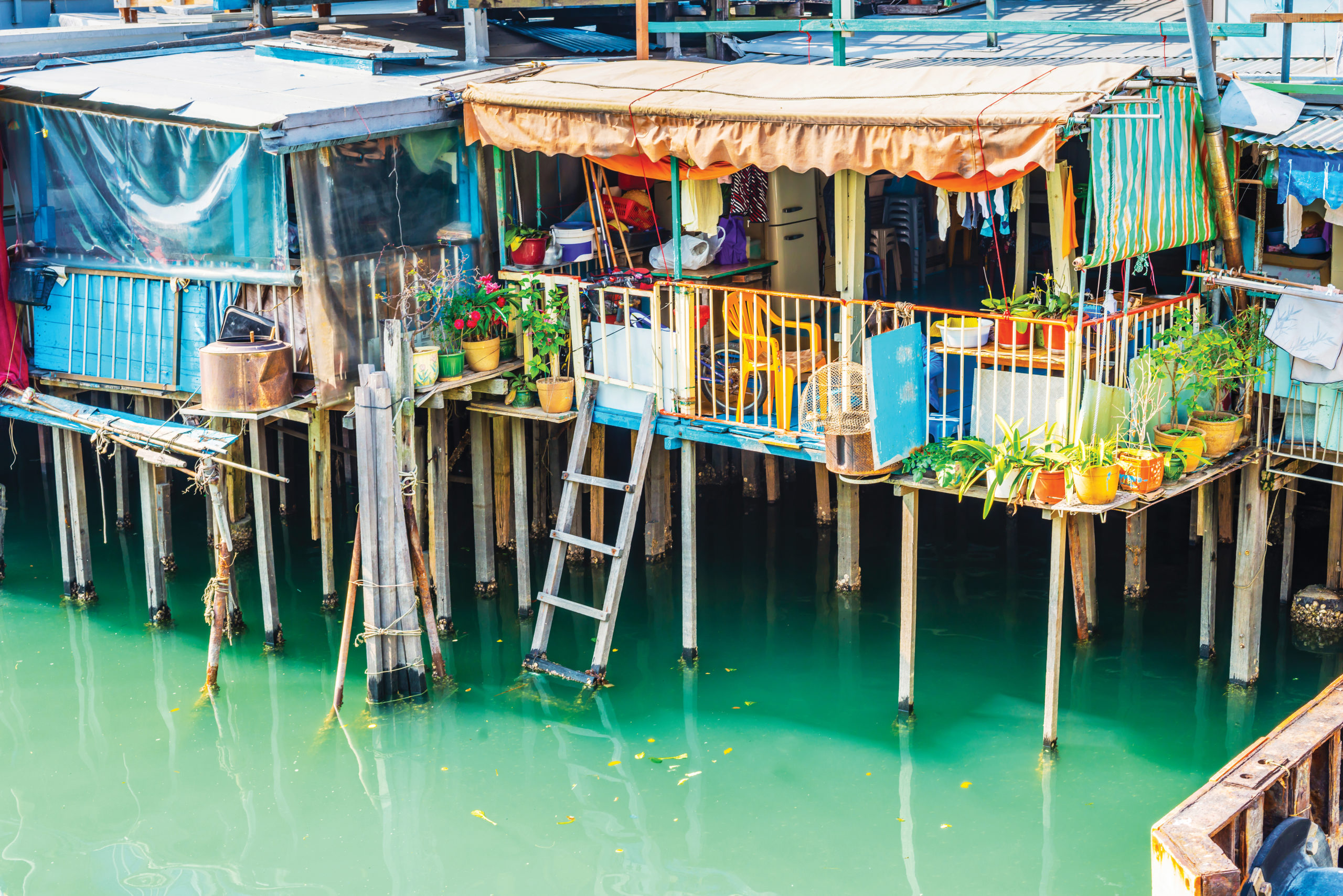
Once, these fishing families
were friends braving the stormy
seas to catch yellow croakers together;
now, they are like families.
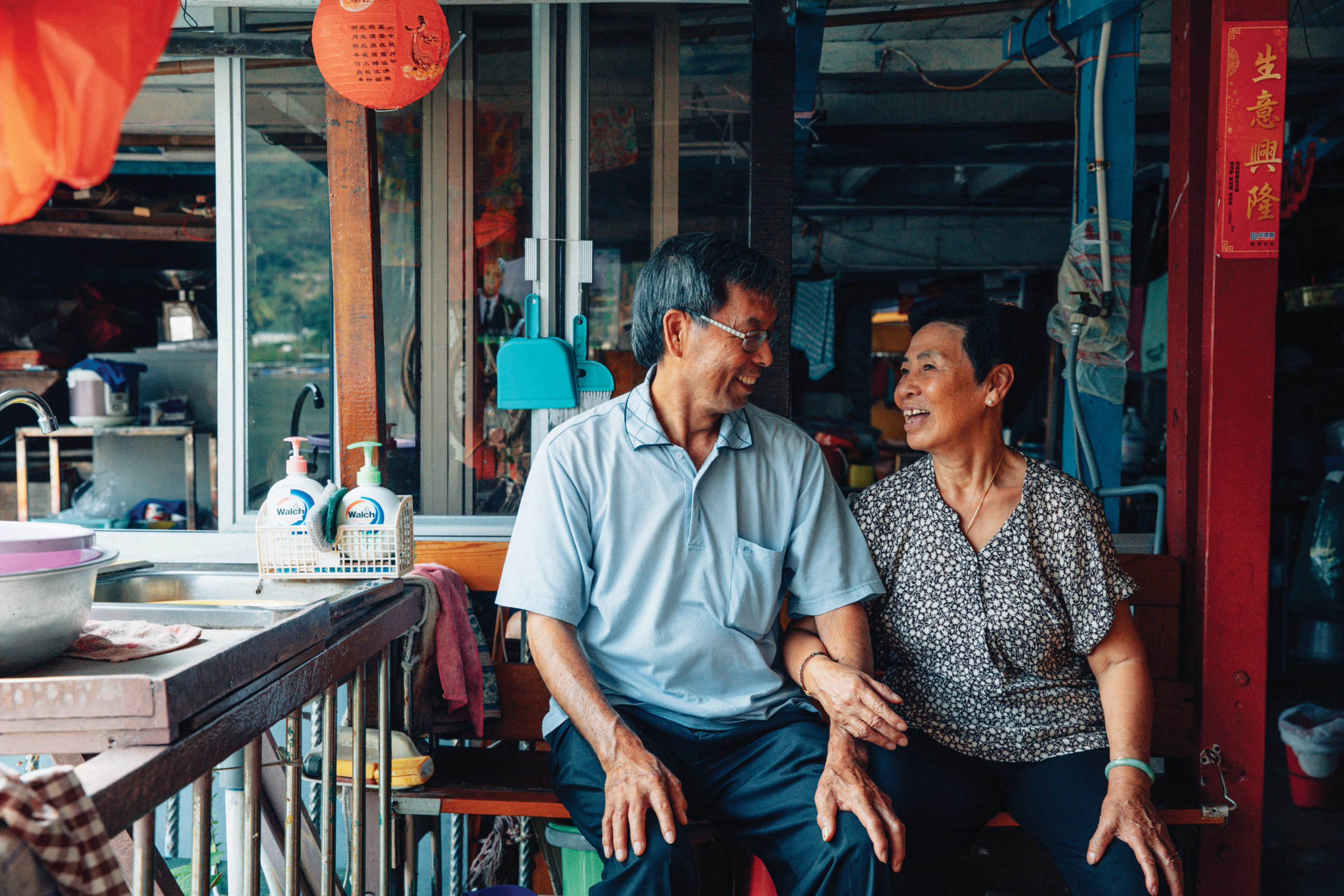
Leung and his wife are now retired, and their children have moved to the city to work, but they still make their home in a stilt house. Today, these houses are much stronger: they are not built of old wooden boats, but concrete columns and steel sheets. At weekends and during festivals, Leung’s family gathers to celebrate in their stilt house. What is interesting is that the stilt houses are built so closely that together they look like a small tribal community living on the water, where all the households are connected. On the day we visited, Leung’s daughter-in-law and great grandson were there. While enjoying a pack of Vitasoy, the small boy ran and jumped around the stilt houses where his great grandparents and their neighbours live.
That evening, Leung and his wife were preparing to attend a banquet. Who was the host? “Them!” Leung cried, pointing to the house of his next door neighbour. Once, these fishing families were friends braving the stormy seas to catch yellow croakers together; now, they are like families. Stories of the sea and the local community continue to be passed down and preserved by the inhabitants of these stilt houses, standing resiliently on the shore of Tai O.
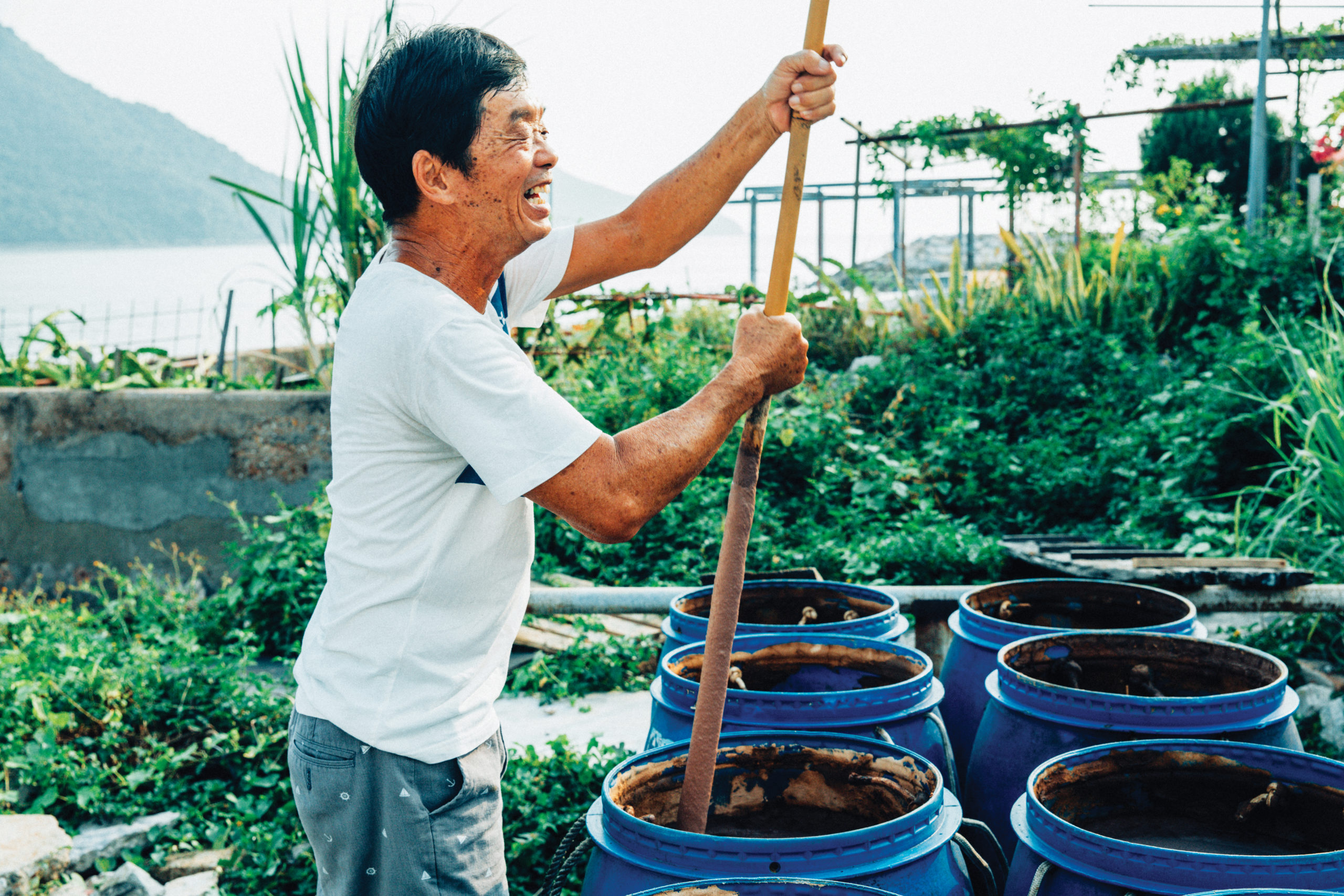
“Over a hundred years ago, Cheng’s great grandfather moved from Nantou in Bao’an County and settled in Tai O. Since then, the family has been buying small, milkfish silver shrimps from local fishermen to produce shrimp sauce.”
Tai O’s flavour: shrimp sauce
As an old fishing village, Tai O is not just the home of old fishermen, but also houses local seafood processing workshops: for instance, the source of the renowned Tai O shrimp sauce. After visiting the stilt houses, we came to Cheng Cheung Hing Shrimp Sauce Factory and talked to Cheng Kai Keung, the fourth generation owner of this family business.
A factory of four generations
Over a hundred years ago, Cheng’s great grandfather moved from Nantou in Bao’an County and settled in Tai O. Since then, the family has been buying small, milkfish silver shrimps from local fishermen to produce shrimp sauce. Today, Cheng still lives in Shek Tasi Po Street, where his ancestral house once stood; and his factory is just opposite.
Though it’s called a factory, the scale of Cheng’s workshop isn’t big. Jars of shrimp sauce with labels of simple design stand behind the shop’s display window; a few steps would take you to the production area where Cheng uses a giant wooden stick to stir the fermenting shrimp sauce. Bringing your nose closer to the sauce, it’s said that you can tell its “maturity” from its aroma.

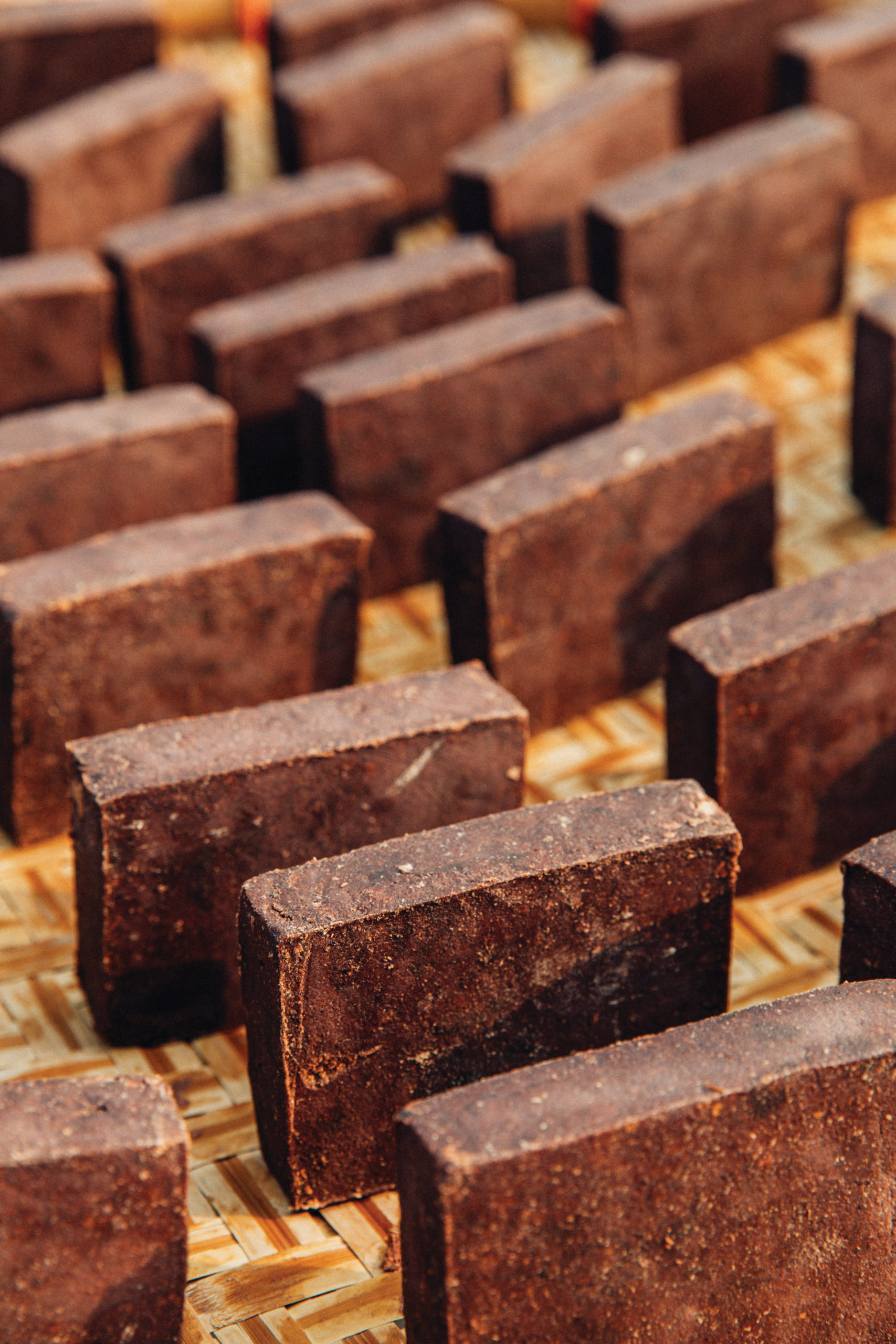
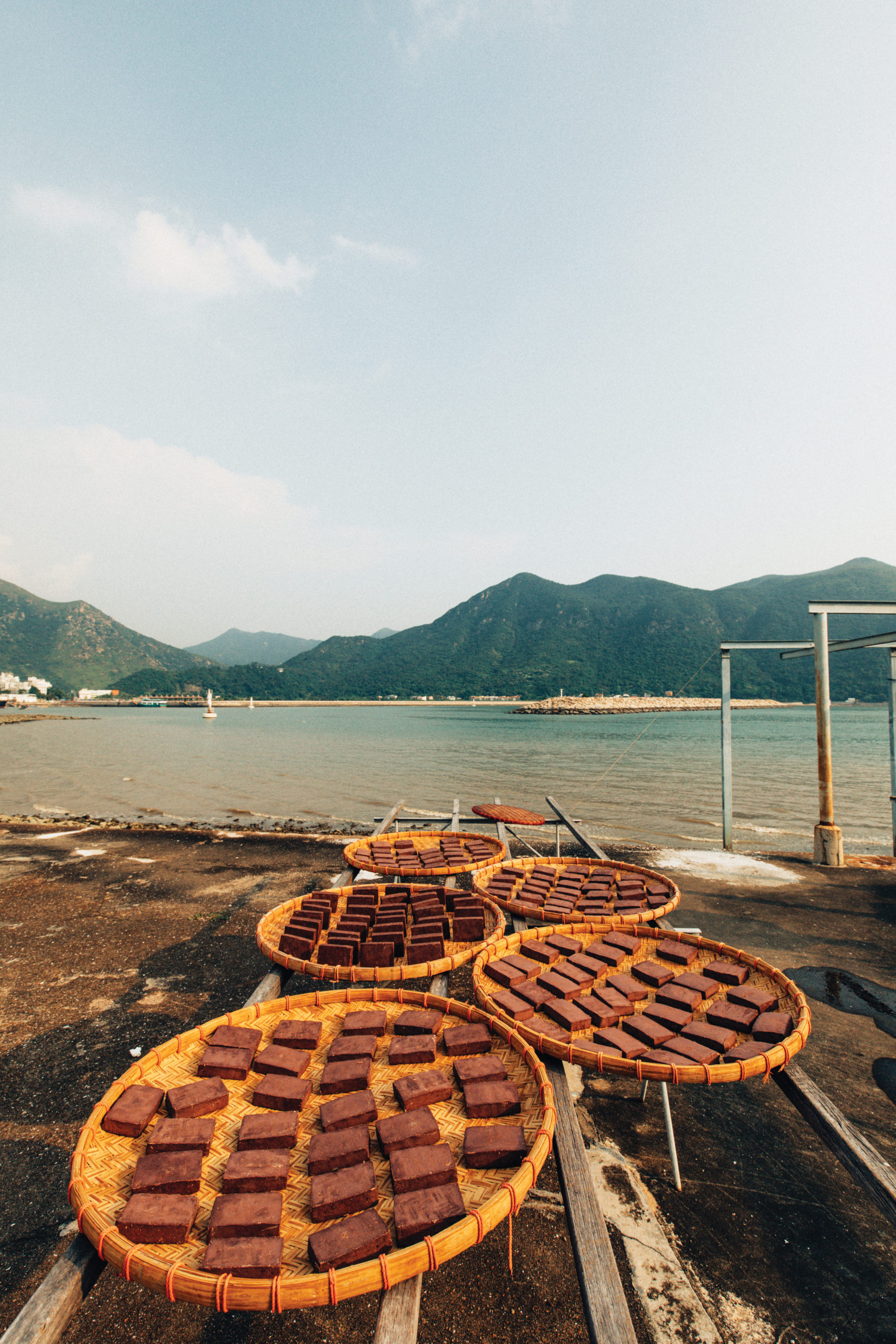
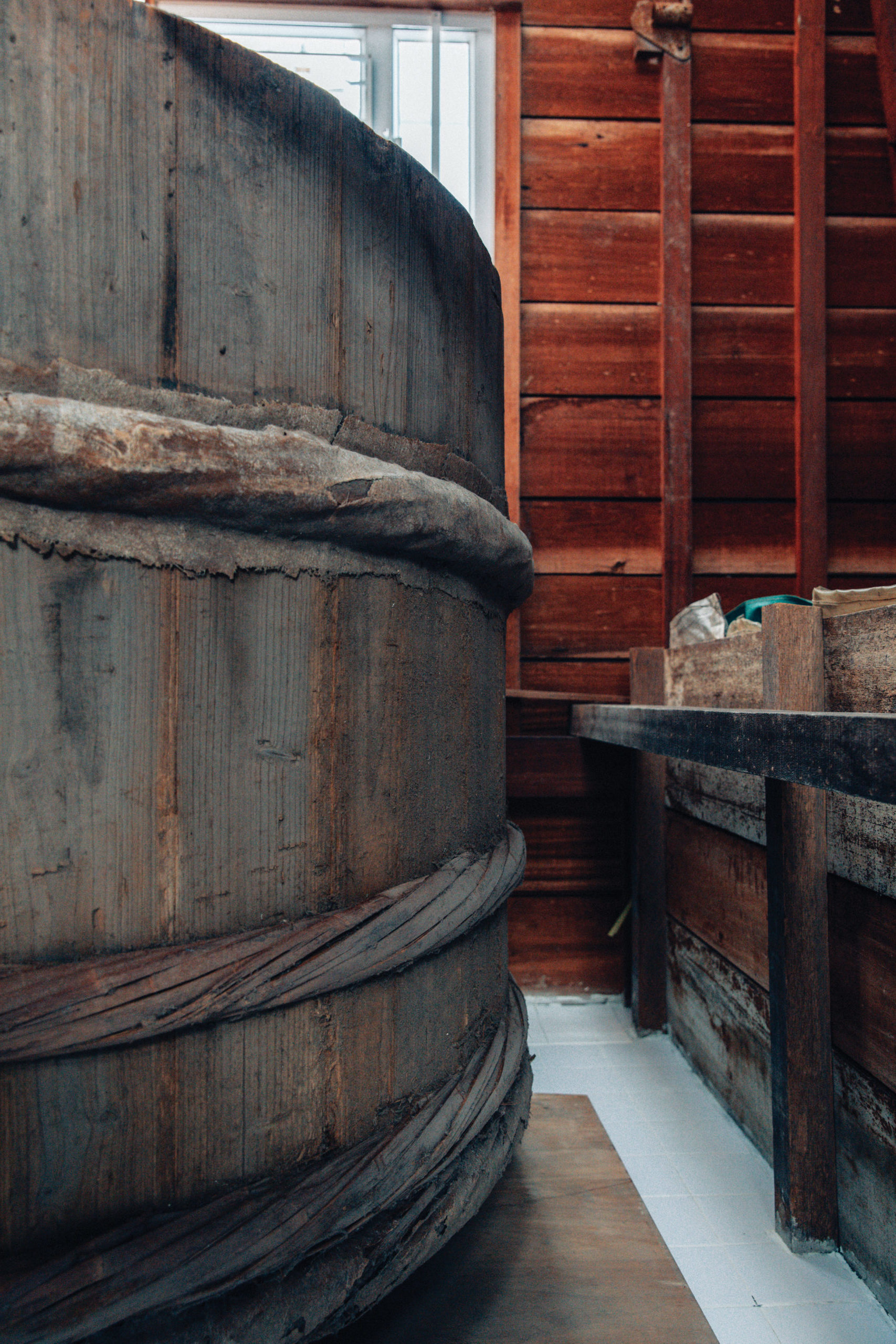
“I use my nose to tell the maturity of the sauce. Mature ones give a rich aroma, while immature ones give off a strong fishy smell.”
To people living along the shore of Guangdong, the smell of shrimp sauce is very familiar. Whether it’s steamed pork or stir-fried vegetables, shrimp sauce has the power to bring out the freshness of all kinds of different ingredients, and add flavour to the dish. Shrimp sauce making is a complicated process; first, the freshly-caught silver shrimps have to be salted and fermented for 3-4 days; then, they are minced into paste by machine. The creamy mixture is then placed onto bamboo baskets for drying in the sun.
After the moisture has been extracted, the half-processed shrimp sauce is transferred to plastic buckets for fermentation again, which takes around 3 weeks - during which time the mixture needs to be stirred regularly. To outsiders, these plastic buckets containing red shrimp sauce all look the same, but “This is definitely wrong,” says Cheng. “I use my nose to tell the maturity of the sauce. Mature ones give a rich aroma, while immature ones give off a strong fishy smell. By its smell, I decide which is ready to be packed into jars.”
Strong-flavoured foods like cheese and bean curd preserve are acquired tastes, usually only enjoyed by grown-ups. There was once a tourist who brought her child to visit the factory, but the smell was so “nasty” that the kid covered his nose. The mother was embarrassed and scolded him, but Cheng was very understanding and reassured the lady: “People have different tastes. Children find the taste nasty, and that’s his genuine reaction. Why force him to change his view?” Cheng added with a smile.

“Our business was most prosperous in the 1970s
and 1980s. A lot of Chinese moved abroad at that time,
so demand was high. Perhaps overseas Chinese
needed the sauce for cooking dishes to help ease
their homesickness!”
A taste of home
Cheng Cheung Hing Shrimp Sauce is very popular in North America. In fact, it’s so well known that it’s been featured in “A bite of China”, a popular food show on the Mainland. It is no wonder Cheng isn’t worried about the comment of a child. “As far as I remember, our business was most prosperous in the 1970s and 1980s. A lot of Chinese moved abroad at that time, so demand was high. Perhaps overseas Chinese needed the sauce for cooking dishes to help ease their homesickness!” At its peak, Cheng’s shrimp sauce production reached 70-80 tonnes a year.
In recent years, however, Cheng’s shrimp sauce factory has faced a lot of challenges – lack of fish catch being one of them. In fact, there were as many as 10 shrimp sauce factories in Tai O during the 1960s, but only two – including Cheng’s – remain. “During the most prosperous days, we could get 180 ‘dan’ (around 9,000kg) of silver shrimps in a single day, but in the past 20 years, due to destruction of the ecosystem, we have only had 200-300 ‘dan’ (10,000-15,000kg) of shrimps over the whole summer. This forces us to think of solutions.”
As a result, some 20 years ago, Cheng started buying silver shrimps from Mainland fishermen. Due to his high standards, he spent a lot of time communicating with fishermen. “Every detail is important; even if the silver shrimps come from the same area, their quality differs depending on how the fishermen have filtered out the remnants. This can affect the quality of the shrimp sauce.” After years of cooperation, Cheng has finally found a reliable supplier who is willing to follow his instructions about correctly processing the shrimps: “They add the right amount of salt to the fresh shrimps, then ship it to us, then we spend around a month fermenting and drying the sauce,” he says.
Despite the dramatic reduction in shrimp sauce factories in Tai O, Cheng Cheung Hing remains a famous name known by many. And, to this day, Cheng continues to produce as much as 50 tonnes of shrimp sauce every year. In the past few years, there have been approaches from bigger brands, inviting Cheng to sell his recipes and trademarks; but Cheng declined them all: “After all, this is a family business passed down through the generations, and I don’t want to be the one selling it to someone else.” Cheng smiles, and resumes stirring the next batch of shrimp sauce.

